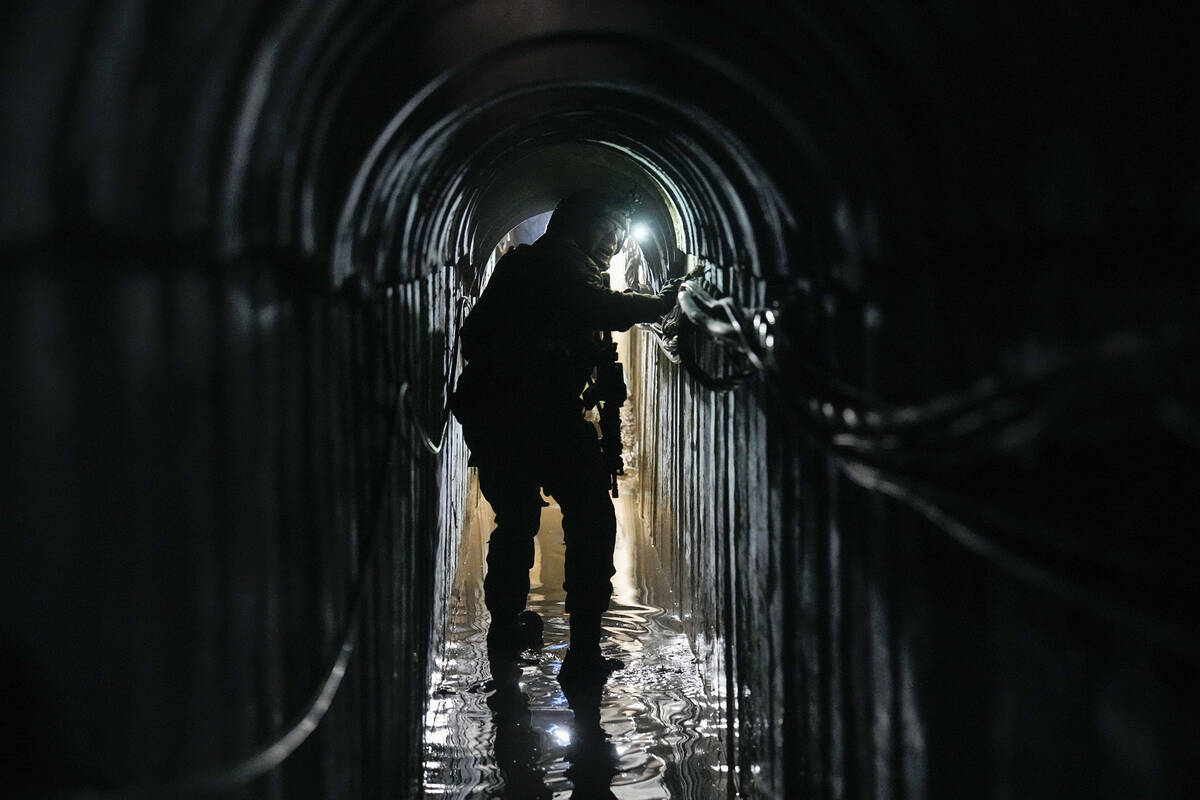Israel strikes Rafah after Netanyahu says ground invasion is coming

RAFAH, Gaza Strip — Israeli airstrikes targeted the southern Gaza city of Rafah on Saturday, hours after Israel’s prime minister said he had asked the military to plan for the evacuation of hundreds of thousands of people there ahead of a ground invasion.
Israel says that Rafah, which borders Egypt, is the last remaining stronghold for the Hamas terrorist group in Gaza after more than four months of war sparked by the Oct. 7 Hamas attack.
Egyptian Foreign Minister Sameh Shoukry said any Israeli ground offensive on Rafah would have “disastrous consequences,” and asserted that Israel aims to eventually force the Palestinians out of their land.
Another mediator, Qatar, warned of disaster if Israel carries out a Rafah offensive, and Saudi Arabia warned of “very serious repercussions.” There is even increasing friction between Israeli Prime Minister Benjamin Netanyahu and the United States, whose officials have said a Rafah invasion with no plan for the civilian population would lead to disaster.
In Khan Younis, Israeli forces opened fire at Nasser Hospital, the area’s largest. The Israeli military said troops were not currently operating inside the hospital and called the surrounding area “an active combat zone.”
Israel’s army chief, Lt. Gen. Herzl Halevi, said more than 2,000 Hamas terrorists in Khan Younis had been killed in airstrikes and ground combat but the offensive in the city was far from over.
Elsewhere in Gaza
Meanwhile, Israel’s military said Saturday it had discovered tunnels underneath the main headquarters of the U.N. agency for Palestinian refugees in Gaza City, alleging that Hamas terrorists used the space.
Recent Israeli allegations that a dozen staff members participated in the Hamas terrorist attack on Israel Oct. 7 plunged the agency into a financial crisis, prompting major donor states to suspend their funding as well as twin investigations. The agency says that Israel has also frozen its bank account, embargoed aid shipments and canceled its tax benefits.
The army invited journalists to view the tunnel on Thursday.
UNRWA Commissioner-General Philippe Lazzarini said the agency had no knowledge of the facility’s underground, but the findings merit an “independent inquiry,” which the agency is unable to perform due to the ongoing war.
The headquarters, on the western edge of Gaza City, are now completely decimated. To locate the tunnel, forces repeated an Israeli tactic used elsewhere in the strip, overturning mounds of red earth to produce a crater-like hole giving way to a small tunnel entrance. The unearthed shaft led to an underground passageway that an Associated Press journalist estimated stretched for at least quarter of a mile, with at least 10 doors.
At one point, journalists were able to gaze upward from the tunnel, through a hole, and make eye contact with soldiers standing in a courtyard within the UNWRA facility.
Inside one of the UNWRA buildings, journalists saw a room full of computers with wires stretching down into the ground. Soldiers then showed them a room in the underground tunnel where they said the wires connected.
That underground room bore a wall of electrical cabinets with multicolored buttons and was lined with dozens of cables. The military said the room served as a hub powering tunnel infrastructure in the area.
“Twenty meters above us is the UNRWA headquarters,” said Lt. Col. Ido, whose last name was redacted by the military. “This is the electricity room, you can see all around here. The batteries, the electricity on walls, everything is conducted from here, all the energy for the tunnels which you walked though them are powered from here.”
The Associated Press journalist could see the tunnel stretching beyond the area underneath the facility.
Hamas has acknowledged building hundreds of miles of tunnels across Gaza. One of the main objectives of the Israeli offensive has been to destroy that network, which it says is used by Hamas to move fighters, weapons and supplies throughout the territory. It accuses Hamas of using civilians as human shields and has exposed many tunnels running near mosques, schools and U.N. facilities.
Lazzarini said the agency was unaware what lay beneath it, saying he had visited the facility multiple times and did not recognize the electrical room. In a statement, Lazzarini wrote that UNWRA had conducted a regular quarterly inspection of the facility in September.
“UNRWA is a human development and humanitarian organization that does not have the military and security expertise nor the capacity to undertake military inspections of what is or might be under its premises,” read the statement.
Death toll rises
Israel declared war after several thousand Hamas terrorists burst across the border into southern Israel on Oct. 7, killing 1,200 people and taking 250 others hostage. Not all are still alive.
The Hamas-run Health Ministry in Gaza said Saturday that the bodies of 117 people killed in Israeli airstrikes were brought to hospitals over the past 24 hours, raising the overall death toll from the offensive to 28,064.
Israel holds Hamas responsible for civilian deaths because it fights from within civilian areas, but U.S. officials have called for more surgical strikes. President Joe Biden said this week Israel’s response is “over the top.”
Netanyahu’s office says it is impossible to eliminate Hamas while leaving four Hamas battalions in Rafah.
Egypt has warned that any movement of Palestinians into Egypt would threaten the four-decade-old peace treaty between Israel and Egypt. The Rafah border crossing, which is mostly closed, serves as the main entry point for humanitarian aid.
German Foreign Minister Annalena Baerbock warned that an Israeli offensive on Rafah would be a “humanitarian catastrophe in the making,” adding on X that “the people in Gaza cannot disappear into thin air.”